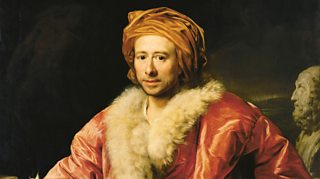
Reflections on Caravaggio
400 years after the death of Caravaggio, writer Andrew Graham-Dixon explores the painter's later period, including David with the Head of Goliath and The Beheading of St John.
The Milanese painter, Michelangelo Merisi da Caravaggio has intrigued the modern imagination more than any other old master. Renowned in his own time for the innovative and shocking realism of his paintings, often celebrated nowadays for the tempestuous lifestyle which informed his work, he is remembered as the creator of art that influenced and inspired. 400 years after his death in July 1610 these portraits of the painter offer a series of personal responses to his work, life and legacy.
Tonight's essay is by Andrew Graham-Dixon, critic, broadcaster, and author of a new biography of the artist. He follows Caravaggio in the wake of the death of the pimp Tomassoni, through the wandering years which took him to Malta, where he became a Knight of St John, and then to Sicily, and considers works in this later period, which include David with the Head of Goliath and The Beheading of St John.
Caravaggio left the southern islands to pursue some northern hopes of pardon and redemption, but these only delivered death. Graham-Dixon reveals new evidence of how he died, parted from his paintings, on a journey to Rome, but Caravaggio's influence endured and spread throughout Europe in the decades after his demise.
Last on
More episodes
Next
You are at the last episode
Broadcast
- Fri 16 Jul 2010 23:00成人快手 Radio 3
Death in Trieste
Watch: My Deaf World
The Book that Changed Me
Five figures from the arts and science introduce books that changed their lives and work.
Podcast
-
![]()
The Essay
Essays from leading writers on arts, history, philosophy, science, religion and beyond.




